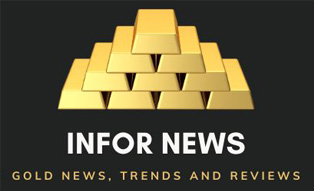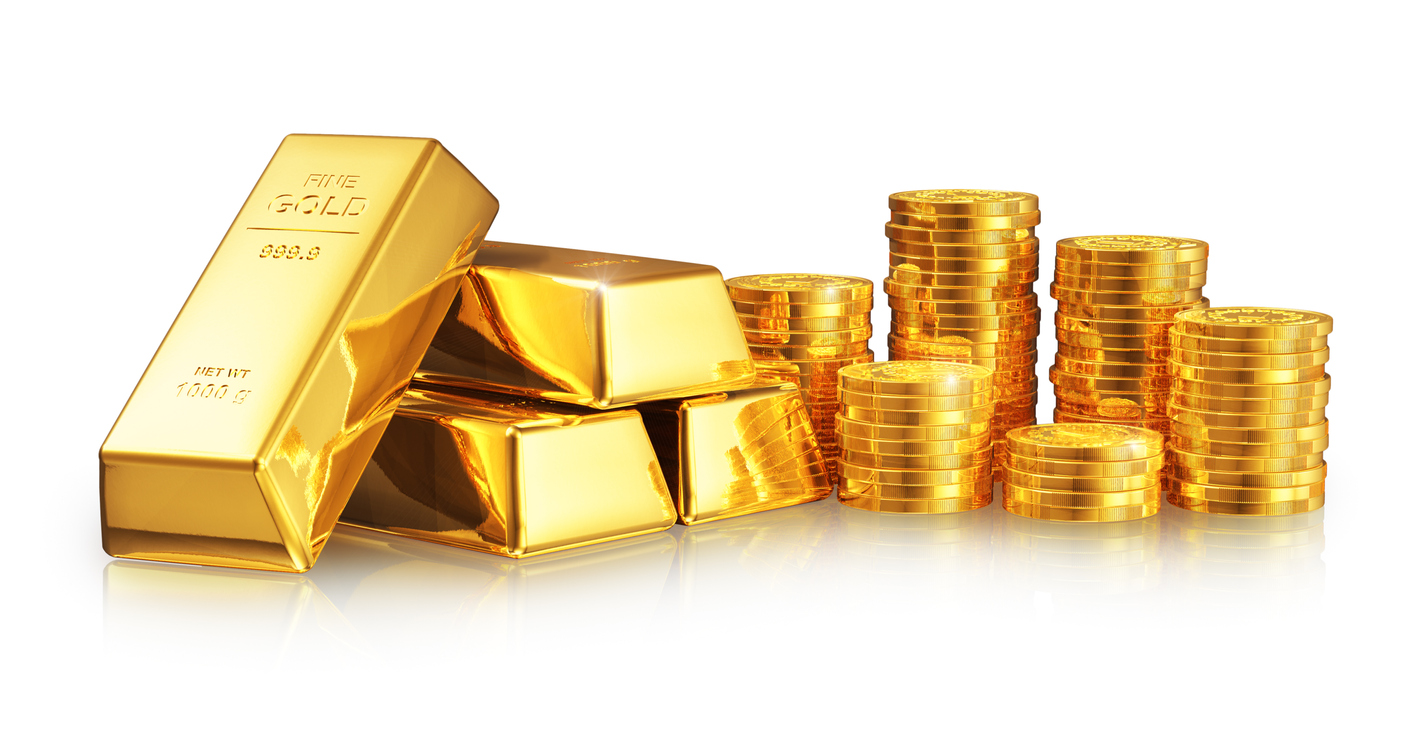Gold has captivated human imagination and desire for centuries. Its discovery has sparked not just a quest for wealth but also the establishment of economies, trade systems, and even empires.
Gold's allure stems not only from its physical beauty and resistance to tarnish but also from its intrinsic value as a finite resource that humans universally accept as currency and a store of value. This precious metal has been intricately woven into the fabric of human history, symbolizing wealth, power, and divine grace across diverse cultures and civilizations.
Gold has always been a symbol of immense wealth and the power that comes with it. However, its role has evolved significantly over the centuries. Today, gold is not just a physical embodiment of wealth but also a sophisticated financial instrument. This transition from a tangible symbol of wealth and power to a cornerstone of modern investment portfolios is both fascinating and complex.
In this exploration, we loon into the rich tapestry of gold's history, tracing its journey from the ancient vaults of kings and queens to the secure vaults of today's central banks and private investors.
We will examine how gold has maintained its relevance and value, not only as a cherished commodity but also as a vital component of diversified investment strategies in the modern financial landscape. Through this lens, we aim to understand the enduring legacy of gold and its unwavering appeal as a safe haven and a hedge against economic uncertainties.
The Origins of Gold as Currency
The history of gold as a currency is as ancient as civilization itself, with its roots deeply embedded in the earliest human societies. The allure of gold, coupled with its malleability, rarity, and enduring nature, made it an ideal medium for trade and wealth storage among ancient civilizations.
Ancient Civilizations
In Egypt, gold's significance transcended economic use, intertwining with the spiritual and divine. Pharaohs and high priests considered gold the flesh of the gods, a belief that justified its use in tombs and temples, ensuring the deceased a prosperous afterlife. Meanwhile, in Mesopotamia, one of the cradles of civilization, gold was integral to the region's burgeoning trade systems. It facilitated trade across vast distances, including with the Harappan civilization of the Indus Valley. This early trade laid the groundwork for gold's role as a universal symbol of wealth and a standard for international commerce.
The Role of Gold in Ancient Empires
As empires rose and expanded their reach, gold continued to play a pivotal role in their economies and societies. The Roman Empire, for instance, introduced a comprehensive monetary system where gold coins became a standard for trade and military payments, solidifying gold's role as a currency. This system greatly influenced the economic stability and expansion of the empire, allowing for unprecedented growth and prosperity.
In the East, the Chinese Empire recognized gold's value, utilizing it in various forms, from coins to ingots, as part of their complex monetary system. The introduction of paper money during the Tang Dynasty did not diminish gold's importance; rather, it complemented the metal's role in the economy, anchoring the value of paper currency.
The Byzantine Empire, continuing the legacy of Rome, established the solidus as its standard gold coin, which became one of the most trusted and widely circulated currencies of the medieval world. The solidus not only facilitated trade within the empire but also across Europe and Asia, becoming a benchmark for international trade and economic stability.
These ancient civilizations and empires laid the foundational stones for gold's enduring role as a universal currency. Their innovations in gold minting and trade systems underscored the metal's intrinsic value and versatility, shaping its trajectory as a cornerstone of economic exchange and a symbol of wealth and power through the ages.
The Gold Standard Era
The gold standard era marks a significant chapter in the annals of global economic history, characterized by the adoption of a monetary system that anchored national currencies to a specified quantity of gold. This period saw the widespread implementation of a framework that sought to stabilize currencies and facilitate international trade through a universally recognized value measure.
Definition and Implementation
The gold standard is defined as a monetary system in which a country's currency has a value directly linked to gold. Countries that adopted the gold standard agreed to convert paper money into a fixed amount of gold upon request. The essence of this system was to control the issuance of currency and ensure its value was underpinned by the gold reserves held by the government or central bank. This mechanism aimed to curb inflation by limiting the amount of money that could be printed, ensuring that the money supply grew only as much as the gold reserves increased.
International Gold Standards and Economic Stability: The Pros and Cons
The international adoption of the gold standard in the 19th and early 20th centuries brought about an era of unprecedented economic stability and growth. It facilitated easier international trade as currencies could be easily compared and exchanged based on their gold value, reducing the risks associated with exchange rate fluctuations. This stability encouraged long-term investment and economic expansion across borders.
However, the gold standard also had its drawbacks. It limited the flexibility of central banks to adjust monetary policy in response to domestic economic conditions. During economic downturns, the requirement to maintain gold reserves restricted the ability of governments to increase spending or cut taxes to stimulate the economy. Furthermore, the discovery of new gold deposits or advancements in gold extraction technologies could lead to inflation, while a scarcity of gold could lead to deflation, both of which could have destabilizing effects on economies.
The End of the Gold Standard: Transition to Fiat Money in the 20th Century
The gold standard began to unravel during the tumultuous years of the Great Depression in the 1930s. In an effort to combat economic decline, many countries found the restrictions imposed by the gold standard untenable. Starting with Britain in 1931, nations began to abandon the gold standard, allowing their currencies to float freely and enabling central banks to implement monetary policies tailored to their domestic needs.
The final nail in the coffin for the gold standard came in 1971 when the United States, under President Richard Nixon, suspended the convertibility of the dollar into gold, effectively ending the system globally. This transition marked the shift to fiat money—currency that is not backed by a physical commodity but rather the government's declaration that it has value. This new era provided governments with greater control over their economies, allowing for more responsive and flexible monetary policies.
The legacy of the gold standard era remains a topic of much debate among economists and historians. While it offered stability and facilitated international trade, its inflexibility in times of economic crisis highlighted the need for more adaptable monetary systems. The transition to fiat money has opened new avenues for economic management, albeit with its own set of challenges and complexities.
Gold as an Investment in the Modern Era
In the contemporary financial landscape, gold continues to hold a unique and revered position as a viable investment vehicle. Its historical legacy as a store of value and a symbol of wealth has seamlessly transitioned into the modern era, where it now plays a multifaceted role in investment portfolios. The allure of gold, derived from its tangible value and intrinsic beauty, is complemented by its utility in hedging against economic uncertainties, making it a cornerstone for investors seeking to mitigate risks.
Gold Investment Vehicles
The modern investor has access to a variety of gold investment vehicles, each offering different advantages and considerations. Physical gold bullion and coins remain popular for their tangible appeal and direct ownership of the metal. These forms of gold investment are often favored for their simplicity and the direct control they offer, allowing investors to hold a piece of history in their hands.
Exchange-Traded Funds (ETFs) that track the price of gold offer a more liquid and accessible means of investment. These financial instruments allow investors to gain exposure to gold prices without the need for storing physical metal, providing a cost-effective and convenient option for incorporating gold into investment strategies.
Mining stocks represent another avenue, enabling investors to benefit from the profitability of gold mining companies. While these stocks offer leverage to gold prices, they also carry operational and market risks distinct from the metal itself.
Digital gold represents the newest frontier in gold investment. By tokenizing gold on blockchain platforms, digital gold allows investors to own fractions of physical gold stored in secure vaults, combining the timeless value of gold with the efficiency and security of modern technology.
Gold during Economic Crises
Gold's performance during periods of economic crises has underscored its reputation as a "safe haven" asset. In times of inflation, gold has historically maintained its value better than fiat currencies, which can lose purchasing power. Conversely, during deflationary periods, when prices decline, gold's purchasing power has tended to increase.
Geopolitical instability and financial market turbulence further highlight gold's appeal as a protective investment. Its price often rises in response to uncertain economic forecasts, serving as a hedge against both systemic financial risks and specific asset market downturns.
The 21st Century: Gold's Role in a Diversified Investment Portfolio
In the 21st century, the argument for including gold in a diversified investment portfolio has strengthened. Beyond its traditional appeal, gold offers portfolio diversification benefits, serving as a hedge against currency devaluation and inflation while providing potential for capital appreciation. Its low or negative correlation with other asset classes, such as stocks and bonds, helps in reducing overall portfolio volatility.
As investors navigate the complexities of modern financial markets, gold's enduring value and stability continue to make it an attractive component of strategic investment planning. Whether through physical ownership, financial instruments, or innovative digital platforms, gold offers a versatile and resilient investment option, capable of enhancing portfolio performance through various economic cycles.
Challenges and Considerations for Gold Investors
Investing in gold, while offering numerous benefits, also presents a unique set of challenges and considerations that investors must navigate to optimize their investment outcomes. Understanding these factors is crucial for both seasoned and novice investors aiming to leverage gold's potential in their portfolios.
Volatility: Factors Influencing Gold Prices
Gold prices are subject to volatility, influenced by a complex interplay of factors. These include global economic indicators, interest rates, inflation rates, geopolitical tensions, and currency values, particularly the US dollar's strength. Additionally, central banks' monetary policies and their decisions regarding gold reserves can significantly impact gold prices. Investor sentiment, driven by economic uncertainty or crises, often leads to increased demand for gold, pushing prices higher. Conversely, positive economic growth and higher opportunity costs from rising interest rates can diminish gold's appeal, leading to lower prices. Navigating this volatility requires a keen understanding of these factors and how they interrelate.
Storage and Insurance: Practical Aspects of Owning Physical Gold
Owning physical gold, whether in the form of bullion, coins, or jewelry, entails considerations regarding storage and insurance. Secure storage is paramount to protect against theft, loss, or damage. Investors often resort to safety deposit boxes at banks or secure vaults specializing in precious metals. However, these options come with costs that can impact the overall return on investment. Moreover, insuring gold holdings is advisable to safeguard against potential losses, adding another layer of expense. These practical aspects demand careful planning and management to ensure the security of the investment while minimizing associated costs.
Digital Gold and Cryptocurrencies: New Frontiers in Gold Investment
The advent of digital gold and its intersection with cryptocurrency technology represents a new frontier in gold investment. Digital gold products allow investors to own gold in a digital format, backed by physical gold stored in secure vaults. This innovation combines gold's traditional stability with the convenience and liquidity of digital assets. However, this emerging investment vehicle also introduces considerations related to technological risks, platform reliability, regulatory changes, and the evolving landscape of digital assets. Similarly, some investors view cryptocurrencies as digital gold, given their finite supply and potential as a store of value. Yet, cryptocurrencies carry significant volatility and regulatory uncertainties that differ markedly from traditional gold investments.
The Future of Gold
As we gaze into the future of gold, it becomes evident that this age-old asset is on the cusp of transformation, influenced by technological advancements, environmental concerns, and its perennial value in the global economic landscape. The convergence of tradition and innovation heralds a new era for gold, one that promises to reshape its role and relevance in the 21st century and beyond.
Technological Advancements: Blockchain and the Potential for Tokenized Gold
One of the most significant technological advancements impacting the future of gold investment is the advent of blockchain technology and the potential for tokenized gold. Blockchain offers a secure, transparent, and efficient platform for transactions, which aligns perfectly with the intrinsic values of trust and reliability associated with gold. Tokenization of gold through blockchain technology enables investors to own and trade fractions of physical gold, stored securely in vaults, without the need for physical handling. This digital representation of gold combines the tangible value of the metal with the agility and accessibility of digital assets, potentially broadening its appeal to a new generation of investors and enhancing liquidity in the gold market.
Environmental and Ethical Mining: Sustainable Practices in Gold Production
The environmental impact of gold mining has long been a concern, given the industry's historical reliance on practices that can cause significant ecological damage. However, the future of gold production is increasingly moving towards sustainable and ethical mining practices. This shift is driven by heightened awareness of environmental issues among consumers, investors, and regulatory bodies, as well as a recognition of the long-term benefits of sustainability in mining operations. Sustainable mining practices include reducing the use of toxic chemicals, improving water management, rehabilitating mine sites, and ensuring fair labor practices. As these practices gain traction, they not only mitigate the environmental and social impacts of gold mining but also enhance the overall value proposition of gold as a responsible investment.
Gold's Enduring Value: Speculations on its Future Role in Global Economies and Investment Strategies
Despite fluctuations in price and demand, gold's enduring value as a safe haven and a hedge against inflation and currency devaluation remains undisputed. Looking forward, gold is poised to continue playing a pivotal role in global economies and investment strategies. Its inherent value, derived from its scarcity, beauty, and utility, ensures that gold remains a sought-after asset during times of economic uncertainty and volatility.
Moreover, as central banks and financial institutions increasingly focus on diversification and risk management, gold's role as a non-correlated asset makes it an attractive component of diversified investment portfolios. Additionally, the ongoing innovations in how gold is traded and invested, including digital platforms and environmentally sustainable mining practices, are likely to enhance its appeal to both traditional investors and a younger, more environmentally and ethically conscious demographic.
In conclusion, the future of gold, shaped by technological innovation, a commitment to environmental and ethical standards, and its unassailable value, looks bright. As we navigate the complexities of the modern financial and geopolitical landscape, gold's timeless allure, bolstered by contemporary adaptations, ensures its continued significance and relevance in the global economy.
As we reflect on the journey of gold from its origins as an ancient currency to its status as a modern investment asset, it is clear that this precious metal has undergone a remarkable transformation. Historically, gold's intrinsic value and universal appeal have established it as a cornerstone of trade and wealth across civilizations. Its evolution has been shaped by its enduring qualities: scarcity, durability, and the unparalleled allure that has captivated human societies for millennia.
In the modern era, gold has transcended its traditional roles, adapting to the complexities of contemporary financial systems. It has proven itself not merely as a physical commodity but as a versatile asset class that offers investors a hedge against inflation, a safe haven in times of economic uncertainty, and a tangible link to the wealth of ages. The advent of technological innovations, such as blockchain for tokenized gold, and a growing emphasis on sustainable and ethical mining practices, have further broadened gold's appeal to a new generation of investors, ensuring its relevance in the digital age.
Despite the rise of new asset classes and the rapid pace of technological change, gold's allure remains undiminished. Its role in global economies and investment portfolios is not merely a product of tradition but a testament to its unique attributes as a store of value and a symbol of stability.



